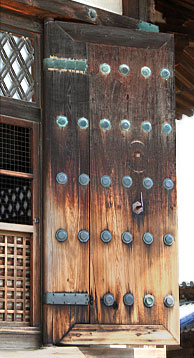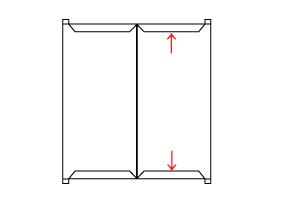Also
written hashibame 端嵌. Narrow long strips of wood made to cover the top
and bottom of doors composed of several vertical planks itado 板戸, the cut
ends of paneled doors *itakarado
板唐戸, and staggered shelving *chigaidana
違い棚. These strips of wood prevent warping from expansion and contraction due to
seasonal heat and cold, and general weathering from wind and rain. This technique
is practiced for both single-piece and jointed doors. Usually both ends are mitered
*tome 留 at a 45 degree angle.
The oldest hashibami method used wooden clamps like those found on the
*Tamamushi no zushi
玉虫厨子(mid-7c) owned by Houryuuji 法隆寺, and on doors at Houryuuji Touin Denpoudou 法隆寺東院伝法堂
(8c), in Nara. There are many variations including honzane hashibame
本実端嵌, a true tongue and groove, and arikatazane hashibame 蟻形実端嵌, a tongue
and groove joint in a dovetail shape.
|



